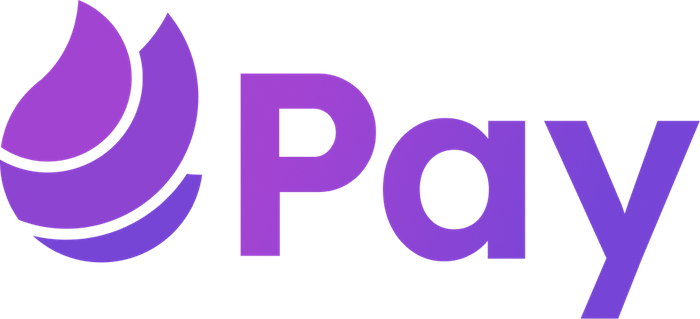What is Nonprofit Fundraising?


Fundraising is the lifeblood of every nonprofit organization.
It’s an essential part of the work that nonprofit professionals do to raise awareness about their mission and attract supporters and donors. Without a clear and effective fundraising strategy, nonprofits will fall short in their efforts to do more good for the community.
Organizations rely on fundraising revenue to run campaigns, cover their overhead costs, and stabilize their operations. The more donations you receive, the greater the impact you can have, and the more functional your nonprofit will be. But asking for money from strangers can be challenging and maintaining a constant flow of donations is even more challenging.
This comprehensive guide covers everything you need to know about nonprofit fundraising, including the different types of fundraising channels, how nonprofits can accept donations online, and the best practices for developing an effective fundraising strategy for your organization.
The Definition of Nonprofit Fundraising
Nonprofit fundraising is the process of soliciting monetary and in-kind contributions to support a cause, nonprofit or charitable organization. It is the process of asking for donations from individuals, businesses, foundations, and government agencies. Nonprofits rely on donations to fund projects, supplies, campaigns, and everyday expenses, such as payroll and utilities.
See How Nonprofits Use Keela to Raise Funds
Get a glimpse of how Keela’s fundraising smart tools help nonprofit organizations to strategize, streamline, and automate their fundraising efforts.
Why Fundraising is Important to Nonprofits
Unlike for-profits, nonprofits do not offer goods and services in exchange for payments. Instead, nonprofits have to solicit donors willing to support their cause and campaigns to help their communities. Without the solicitation of donations, it will be impossible for many nonprofits to stay afloat or work towards their goals.
This is why it is so important for nonprofit teams to have a smart fundraising strategy in place at all times. Having a solid fundraising strategy can allow your nonprofits to do the following:
1. Raise awareness about your cause
Nonprofits require funding so they can expand their marketing efforts and spread the word about the work they are doing in the community. The more people nonprofits can reach, the better their chances of attracting new supporters and donors.
2. Give credibility to your organization
As your nonprofit grows, you want to have a track record of doing good work over the years. You also want to see the quality of your organization’s impact increasing from year to year. Having more fundraising revenue can help your organization achieve this, and the more impact your nonprofit makes over time, the more credible it will become.


Forecast Your Annual Fundraising Revenue
Use this calculator to accurately forecast major gifts, grant funding from foundations, governments, and corporations, as well as individual and recurring donations, and more.
3. Attract attention from foundations and other institutions that may award grants
Foundations, academic institutions, and government agencies are always looking for nonprofits to support and award grants. These establishments prefer funding organizations that have a track record of success and an excellent fundraising plan. With an effective fundraising strategy, your organization can position itself to receive the grants and funding needed to support your mission.
4. Develop long-term relationships with donors and supporters
Your donors and supporters play a crucial role in the success of your nonprofit’s campaigns, and you never want to lose the support of your people who are willing to contribute to your mission. Your organization will benefit from having a robust fundraising plan that details how it will sustain and improve its relationships with donors and supporters and convert them into ambassadors.
5. Fund large projects and research initiatives
You need a steady flow of fundraising revenue to grow your organization’s capacity and impact over time. The more fundraising revenue your organization rakes in, the more opportunities your team will have to organize large projects, like capital campaigns, and conduct research initiatives that can inform the work you do in the community.
How Do Nonprofit Fundraisers Raise Money?
1. Online Fundraising
Online fundraising refers to any solicitation effort by a nonprofit organization via the internet. It involves using digital tools and platforms as well as donation pages and forms to engage donors and accept donations.
More donors are contributing to nonprofits online and this fundraising channel is increasingly becoming a preference for many millennials and Gen Z donors. In fact, from 2017 to 2021, online fundraising revenue for nonprofit organizations increased by 60%. This shows how essential it is for nonprofits to accept donations online.
2. Email Marketing
Email marketing is a direct marketing strategy that involves communicating with and soliciting donors, supporters, and prospects via electronic mail. This form of marketing and communication allows nonprofit organizations to send targeted fundraising appeals to specific donors and donor segments.
In 2021, nonprofits raised $78 for every 1000 fundraising appeals sent via email. With a nonprofit email communications tool, like Keela, your organization can easily send as many targeted fundraising appeals as needed to raise funds for your campaigns.
3. Event Fundraising
Event fundraising involves organizing events to raise awareness about a nonprofit’s cause. Fundraising events—whether they are in-person, virtual, or hybrid—are an opportunity for the nonprofit’s supporters, donors, and partners to come together, develop relationships, and learn more about the nonprofit’s work and impact.
In addition to the donations made during fundraising events, nonprofit organizations can sell tickets to raise money for their campaigns. In 2021, online ticket sales from nonprofit events increased by 13%; so if you’re planning on hosting a fundraising event soon, you should consider tickets.
4. Direct Mail Fundraising
Direct mail fundraising is the process of writing, printing, and mailing fundraising appeals to donors via the postal service. The key benefit of this fundraising method is that donors are more likely to read these appeals sent via mail. This could lead to a better response rate; however, it is recommended that nonprofits combine direct mail fundraising with digital fundraising techniques, like email marketing.
Start Automating Your Direct Mail Campaigns!
Using Keela’s Direct Mail tool, you can enhance your direct mail marketing efforts with automated messaging and an easy-to-use direct mail content editor.
5. Peer-to-Peer Fundraising
Peer-to-peer fundraising involves organizing supporters to raise money from their networks for a nonprofit campaign. It’s a multi-tiered model that uses social media and digital communication tools to spread the nonprofit’s message and solicit donations. Nonprofits will need to use peer-to-peer fundraising software to make it easier for supporters to join, promote and track their campaigns.
6. Auction Fundraising
Auction fundraisers are nonprofit events in which supporters bid to win items, services, or packages. The nonprofits receive proceeds from the auction as donations. This type of fundraising event is great because supporters can walk away with memorable items and services while the nonprofit can raise much-needed funds.
7. Face-to-Face Fundraising
Face-to-face fundraising involves nonprofit fundraisers going from door to door and out in public to raise awareness about their cause among community members. In many communities, nonprofits have to seek permission from local authorities before engaging with potential donors in this manner, publicly. However, when done right, face-to-face fundraising can be a great opportunity for nonprofits to leave a lasting impression on community members.
8. Grassroots Fundraising
Grassroots fundraising involves rallying supporters for a group of like-minded individuals in a community. It generally involves creating movement amongst community members who have similar interests and relying on the strength of this group to raise awareness about the nonprofit’s cause and collect donations. It is a type of peer-to-peer fundraising that’s done publicly instead of via digital platforms.
9. Phone Fundraising
Phone fundraising involves raising money by making phone calls or sending mobile text messages (text-to-give) to donors, supporters, and prospects. This type of fundraising requires identifying and targeting the right donor prospects and then, reaching out to them to gain their support for the nonprofit’s campaign.
10. Crowdfunding
Crowdfunding is a type of social fundraising that involves pooling small amounts of money from a large number of people via social media platforms and the Internet. Nonprofit organizations can use tools like Handbid and GoFundme to create shareable campaign pages where supporters, and their network of friends and family, can make contributions.
What Motivates Donors to Give?
Before you start reaching out to potential donors, you need to know what inspires people to give to nonprofits in the first place. Understanding supporters’ primary motives for donating will help you craft messages that resonate.
1. Altruism
The desire to help others is one of the most compelling reasons people donate. Some people may feel drawn to local causes, while others prefer to give to larger, international nonprofits.
2. Internal Satisfaction
Let’s be honest – most people give to nonprofits because it makes them feel good! Giving money to people and communities in need naturally makes people feel good about doing their part—and in turn, will likely motivate them to donate again in the future.
3. Societal Expectations
Individuals may feel compelled to donate to a nonprofit if they see their family, friends, or coworkers doing so.
4. Personal Connection
People often give to organizations they feel a strong emotional connection to. For example, someone whose life has been affected by cancer will be more likely to donate to an institution that funds cancer research.
5. Tax Incentives
Nonprofit donations are sometimes tax-deductible, which can motivate donors to give. Tax incentives aren’t the primary motivator for giving, but they can be a nice perk for donors who give nonprofits a large sum of money.
6. Impulsivity
Some donors will act on an impulse to give to a nonprofit. Specific donor demographics, like millennials, are more likely to donate on a whim.
How to Create a Nonprofit Fundraising Strategy
Before you’re ready to start receiving donations, you’ll need to create a fundraising strategy. Make sure you check these action items off your list before setting up a fundraising campaign.
1. Set a Financial Goal
Having a targeted fundraising goal in place will help you strategize the best methods for raising money. It’ll also motivate your staff members and volunteers to stay on track while working toward a common goal.
2. Create Marketing Assets
Before donations can start flowing in, you’ll need to get the word out about the fantastic work you’re doing. You can create traditional marketing materials like flyers, pamphlets, and banners to promote your nonprofit in a local area. Or you can opt for digital marketing strategies such as emails and social media to spread the word to more people. Using a combination of traditional and digital marketing can also be a smart option.
3. Set a Budget
It takes money to raise money, so you’ll need to create a budget. Include categories for staff, marketing materials, nonprofit software, and any other tools you may need.
4. Get Started on a Nonprofit CRM
Keeping a database of prospective and current donors is essential. And while basic spreadsheets might cut it at first, you’ll probably want to invest in a nonprofit CRM to manage your contacts as your organization grows. Nonprofit software can help you communicate with donors, market your nonprofit, and understand donor history to raise more money.
5. Track Important Metrics
A data-driven fundraising plan will help you track what’s working and what’s not. It’s a must for learning donor habits, increasing retention, and replicating past successes. A few key metrics you’ll want to track include new donors, donor retention rate, average gift size, and donor lifetime value. Many nonprofit software platforms offer built-in analytics and reporting tools to make this part easy for you.
6. Build up a Volunteer Base
Start building up a community of volunteers you can call on to help run events and support day-to-day activities. Volunteers provide the extra hands you need to collect donations during auctions or fundraisers, answer the phone, or go door-to-door during fundraising campaigns.
7. Create a System for Donation Receipts
Donation receipts are written acknowledgments that a charitable contribution was made. In the United States, donation receipts are required for any monetary contribution greater than $250. But in general, it’s best practice to always send a donation receipt.
Proactively sending receipts is key to building long-lasting relationships with your donors. Instead of doing them manually (yikes), you’ll want to invest in a platform that automatically sends donation receipts for you. Once these resources and processes are in place, you’re ready to start asking for donations.


Simplify your payment process with KeelaPay
With KeelaPay, you can securely process more donations at an affordable rate, send receipts and get access to world-class in-house support.
5 Nonprofit Fundraising Tips to Consider Before Your Next Campaign
After you get individuals or organizations to donate once, how do you ensure they become repeat donors? Follow these tips to communicate with donors and keep them engaged with your organization:
1. Communicate Regularly
One of the biggest reasons people won’t make a charitable gift is that nobody is asking them to! Stay active on the communication, messaging, and social channels your donors are hanging out on, such as email and social media. Don’t be afraid to ask donors for donations, but make sure to mix your asks in with other content they’ll find valuable, such as weekly newsletters and blog posts.
2. Be Passionate
Don’t be shy when it comes to spreading the word about your work! Use photos, videos, and testimonials to show the impact of your mission and get donors emotionally invested in your cause.
3. Segment Your Donor List
Donors want to receive messages that are relevant to them and their history with your nonprofit. Segmenting your contacts into groups allows you to send personalized content that is more likely to encourage donations. You can segment your audience by:
- Giving preferences (dollar amount, frequency, etc.)
- Communication preferences
- Event attendance history
- Business affiliations
4. Be Transparent
Remember, your donors trust that your organization will use their money wisely. Keep them in the loop on all fundraising initiatives, past campaigns, and future plans so they can see where their money is going.
One tactic for keeping donors informed is sending a monthly newsletter. You can recap last month’s activities, call out exciting news, and share upcoming events to build trust and nurture those relationships.
5. Share Impact Stories
Keep your donors informed about the positive impact you’re having in the community. Sharing positive stories from your past campaigns fosters good feelings and shows donors that their gifts made a difference. When donors feel appreciated and see the impact of their donation, they’re much more likely to give again in the future.


Share Your Nonprofit’s Impact Story with this FREE Toolkit
Use this toolkit to discover the key elements of a good impact story and learn how to write yours. Plus, you will get access to a template so you can get a head start on your writing.
Additional Nonprofit Fundraising Resources
Looking for more secrets to help you refine your fundraising strategy? Check out these popular blogs!
- A Guide to 2023 Fundraising Trends for Nonprofits
- A Guide to Marketing Your Nonprofit’s Next Fundraising Event
- 11 Online Fundraising Ideas for Nonprofits (A Complete Guide)
- 10 Canadian Fundraising Tools for Nonprofits
- Fundraising for Nonprofit Boards
- Nonprofit Glossary


